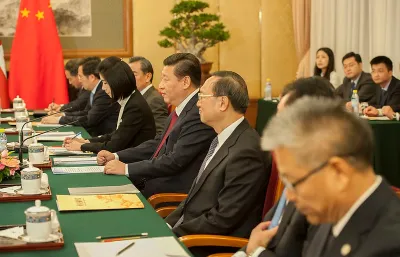China’s growing influence and power on the global stage have raised concerns about its potential threat to the world. One significant aspect of this threat is China’s remarkable economic growth, which has propelled it to become the world’s second-largest economy. This economic prowess gives China considerable leverage in international trade and finance, enabling it to exert pressure on other nations.
In addition to its economic strength, China has been actively modernizing its military and expanding its naval capabilities, leading to apprehensions about its intentions and the possibility of regional conflicts.
Territorial disputes, especially in the South China Sea, have the potential to escalate into international crises. China’s sweeping territorial claims in the South China Sea have raised tensions and brought in the United States, a longtime treaty ally of the Philippines, into the fray, according to AP.
As a recent example, China and the Philippines on Sunday accused each other of causing collisions in a disputed area of the South China Sea, the latest in a string of maritime confrontations between the two countries that have heightened regional tensions.
Widespread concerns regarding human rights violations have emerged as a significant factor in shaping the perception of China as a growing global threat. These concerns span various aspects of human rights abuses, casting a shadow on China’s international image.
China’s stringent censorship practices, both online and offline, have come under scrutiny. The Chinese government maintains tight control over information flows, stifling freedom of expression and limiting access to information deemed sensitive. This systematic censorship not only curtails the rights of Chinese citizens but also has far-reaching implications for global discourse and the exchange of ideas.
In parallel, China’s extensive mass surveillance apparatus has raised alarm bells. The utilization of cutting-edge surveillance technology, including facial recognition and artificial intelligence, has led to the monitoring of citizens on an unprecedented scale. This pervasive surveillance infringes upon individual privacy rights and has the potential for misuse.
One of the most distressing aspects of China’s human rights record is the treatment of minority groups, notably the Uighurs. Reports of mass detentions, forced labor, and cultural repression have drawn widespread international condemnation. These actions are seen as not only a gross violation of human rights but also a source of instability in the region.
Collectively, these human rights concerns contribute significantly to the perception of China as a global threat. They underscore the importance of safeguarding universal human rights principles and the need for a constructive dialogue on these issues in international relations to ensure a more just and equitable world order.
Additionally, allegations of cyber espionage, cyberattacks, and influence operations further compound these concerns. China’s Belt and Road Initiative (BRI) and its promotion of authoritarian values globally add to the complexity of its rising influence, prompting calls for strategic engagement and cooperation with China while addressing these multifaceted challenges to global stability and the international order.
It is – or should be – frightening that China is working toward doubling its nuclear warheads to 1,000 by the end of the decade, according to a new Pentagon report.
China was accelerating its development of capabilities and concepts to “fight and win wars” against a “strong enemy,” a likely euphemism for the United States, said the Pentagon’s “Military and Security Developments Involving the People’s Republic of China” report.
As of 2020, the Department of Defense conducted an assessment that revealed China’s operational nuclear warhead stockpile to comprise slightly over 200 warheads. This estimate raised significant concerns, as it was anticipated that China’s nuclear arsenal would undergo substantial growth over the coming decade. Specifically, the Department of Defense foresaw the possibility of this stockpile doubling in size by the year 2030.
However, the situation has since evolved, and the pace of China’s nuclear expansion has accelerated at a surprising rate. Recent developments indicate that Beijing is fast-tracking its efforts to bolster its nuclear capabilities, surpassing earlier projections. The Pentagon now anticipates that China’s nuclear arsenal could potentially double within the next seven years. This abrupt acceleration has sparked heightened apprehension within the international community, as it underscores China’s commitment to achieving a more formidable nuclear posture, with implications for regional and global security dynamics. The evolving nuclear landscape underscores the need for continued monitoring and engagement in the realm of arms control and non-proliferation efforts to maintain stability in an increasingly complex and competitive world.
